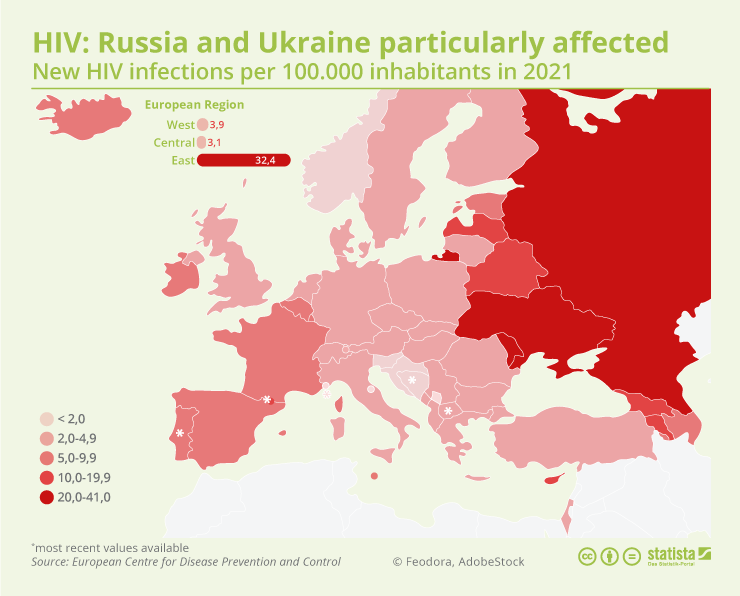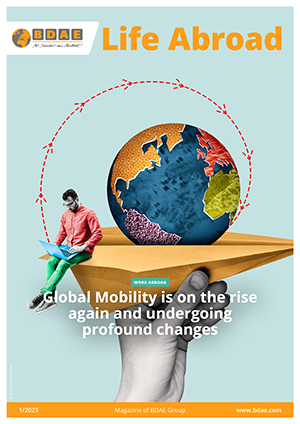In 2021, in Europe, more than 106,000 people were infected with HIV. This is however just the number of people who have been diagnosed with the virus - the number of unreported cases is probably much higher.
Compared to the previous year, the number of confirmed cases has remained at the same level. Overall, about 12 people per 100,000 people are infected on the European continent.
As the graph from Statista with data from the WHO shows, the rate of new HIV infections is particularly high in Eastern Europe, first and foremost in Russia with about 40.2 infections per 100,000 inhabitants, followed by Ukraine with 37.1 infections. A comparison with the other regions of Europe reveals that the HIV problem in the East has been out of control for years. While the infection rates in Western and Central Europe have improved over the past years, the average of 32.4 infections per 100,000 inhabitants remains high in Eastern Europe. In Germany, a total of 2,234 people were diagnosed with HIV in 2021 – a number in decrease, as in the previous year, those numbers were higher by 232 on average.

40 years ago, the US health authority CDC recognised AIDS as a disease in its own right. Due to the rapid spread of the disease-causing human immunodeficiency virus (HIV) in the 1980s and 1990s, AIDS developed into a global pandemic. Even though the disease is no longer as contagious and deadly as it used to be due to medication, stigmatisation, and discrimination of those affected remain far too common.

